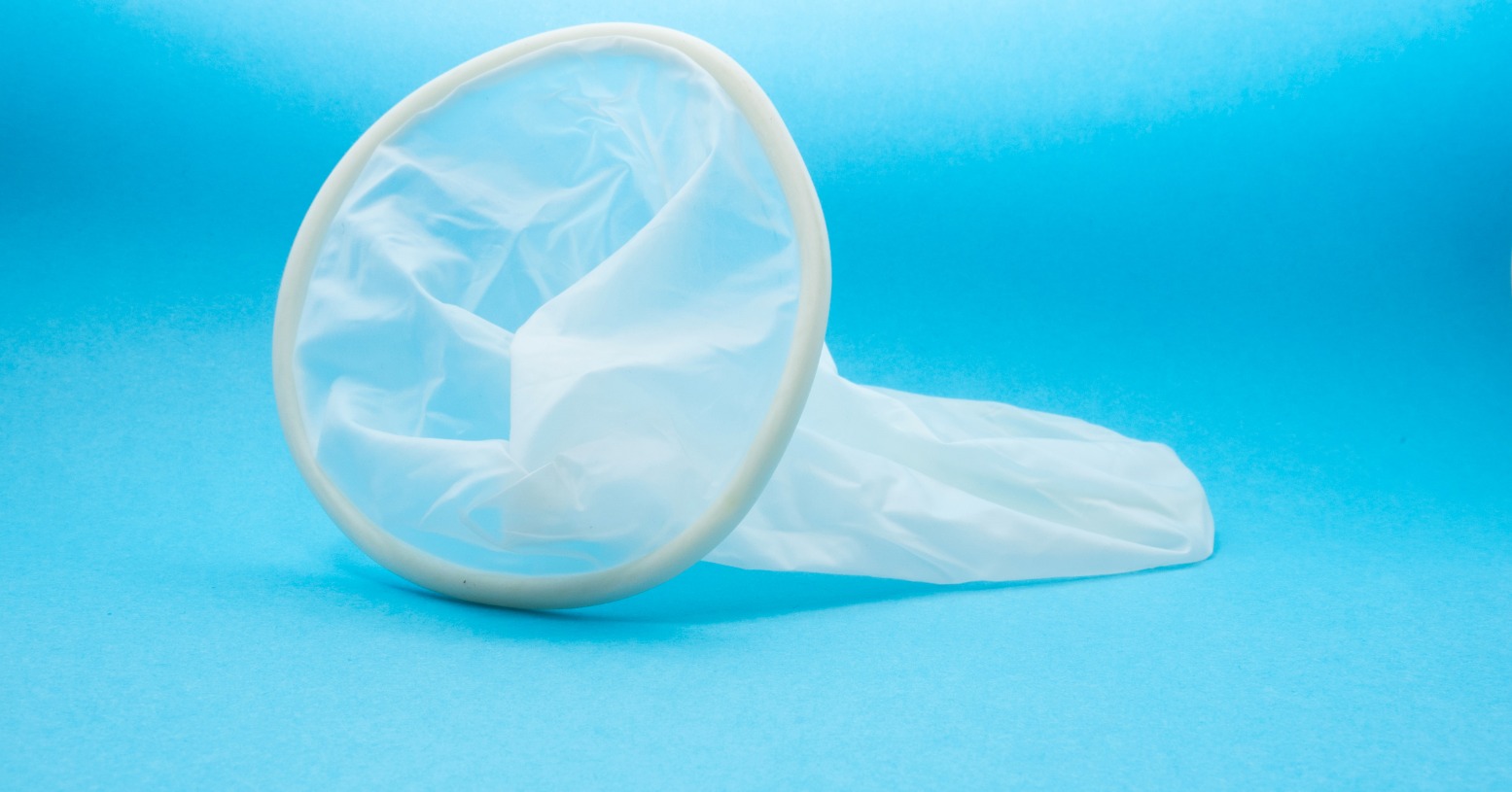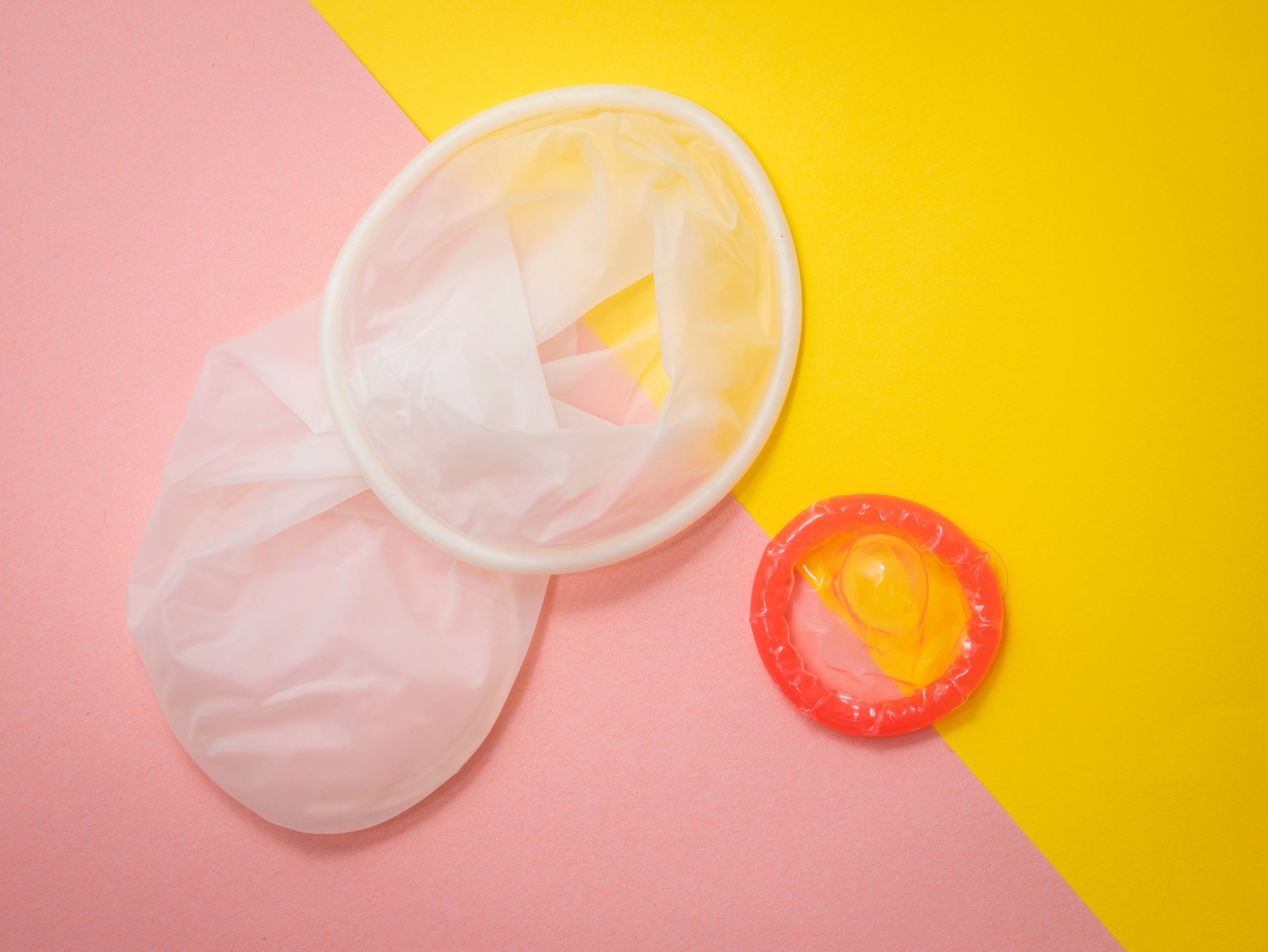You know that moment when the foreplay has heated up and you realise you need to have *the talk* about using an external condom with your partner?
In the worst case, it leads to you having to defend your choice to only engage in protected sex and in the best case you have to awkwardly disengage while you hunt for a condom and wait for them to put it on – a process in which arousal on both sides could diminish significantly. What if I told you there was a way to make that struggle a thing of the past?
Internal condoms are worn by the partner being penetrated, and can be inserted up to 8 hours prior to sex!
How do internal condoms work?
Internal condoms are a barrier-type of contraception. They are far larger than external condoms, rather than being secured around a penis, they are placed inside the vagina to collect the fluids. The condom typically consists of two rings on either end. The smaller ring is placed inside the vagina to hold the condom up and ensure stability, while the larger outer ring is left outside the vagina to prevent the entire condom from being pushed into the vagina.
Inserting the condom
Step 1: Unwrap and unroll the condom from its packaging.
Step 2: Pinch the internal, i.e., smaller ring, together.
Step 3: Much like you would with a menstrual cup or tampon, push the ring deep inside your vagina
Step 4: Ensure the outer ring rests outside the vaginal canal.
Weighing the pros and cons
Pro: It gives vulva-owners complete control of protection during sex.
Too many women are pressured into having unprotected sex because their partners don’t like how condoms “feel”. Still others are victims of stealthing, i.e., cases where their partners took the condom off before penetration without their partner’s consent. With a female condom, women are able to choose when protection is put on, instead of having to resort to OTC morning-after pills- which can have adverse impacts on their health in the long run.
Con: It’s noisy
If you’re having sex, you’ve probably heard your fair share of unintended sound effects- whether it’s the rectum during anal play or queefs during vaginal penetration. Similarly, the use of internal condoms is accompanied by its own soundtrack. The occurrence of this can be mitigated by inserting the condom significantly in advance, thereby allowing it to properly adhere to the vaginal walls.
Pro: They work with all kinds of lubricants, and are suitable for those with latex allergies.
Popular external condoms which are usually made of latex and can dissolve when put in contact with-oil based lubricants.Internal condoms on the other hand, are made of polyurethane or nitrile. This means they’re safe to use for people with latex allergies as well as with all kinds of lubricants.
Con: They require practice to be inserted correctly
Much like menstrual cups, it takes a while to get the hang of popularly inserting and using a female condom. For a lot of people, this adjustment period discourages their use of the condom.
Pro: They could increase sexual pleasure
Because of the location of the two rings, i.e deeper in the vagina and against the vulva, wearing a female condom could increase the sexual satisfaction of the vulva-owner, as each thrust is felt deeper and also against the clit. Women have also reported feeling more physical satisfaction due to the extra lubricant on the condom.
Con: They are not as effective as external condoms
When used correctly, internal condoms will result in 5 pregnancies for every 100 women, while external condoms will result in 2. The difference in efficacy is a lot more stark when you consider the possibility of the condom being used incorrectly, which will lead to 21 pregnancies for every 100 women.
The discrepancy between male and female contraception
The fact of the matter is that internal condoms are not as widely available as external condoms. When they are found at more specialised pharmacies and stores they are also more expensive than external condoms. Furthermore, while the external (male) condom has evolved through 4 generations, internal condoms have not received the same level of attention by the R&D departments of Big Pharma. Currently, there is only one model of internal condoms available in the market, the FC1, which was developed in 1993. As of 2021, there exists only one other model that is undergoing clinical trials- PATH’s Woman’s Condom.
It is hard to determine whether concerns about the efficacy of internal condoms have prevented their widespread use and further development, or whether they have been deprioritised as compared to products designed for male use. Nevertheless, they provide women with options to exercise their sexual agency and for that we are always grateful!











